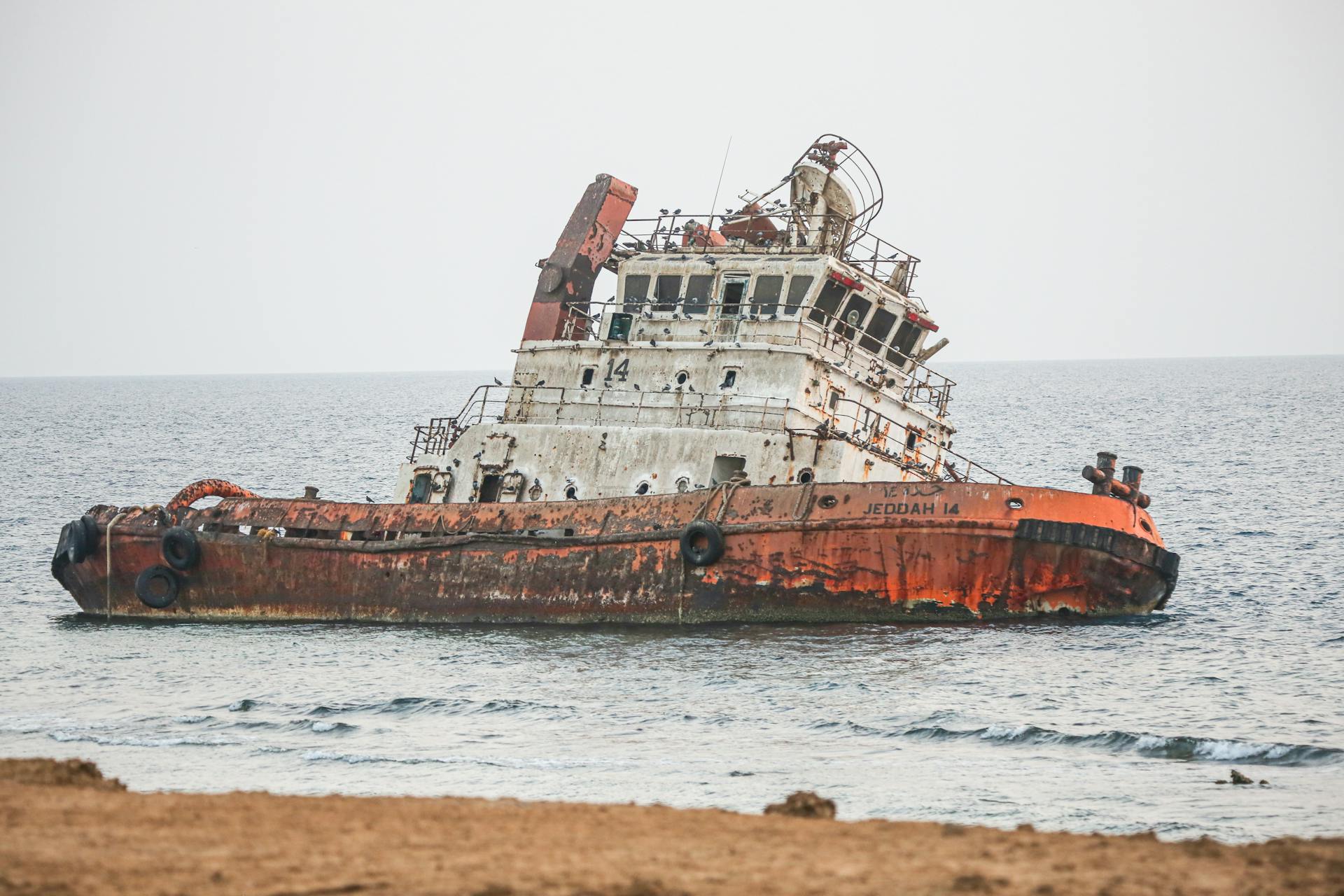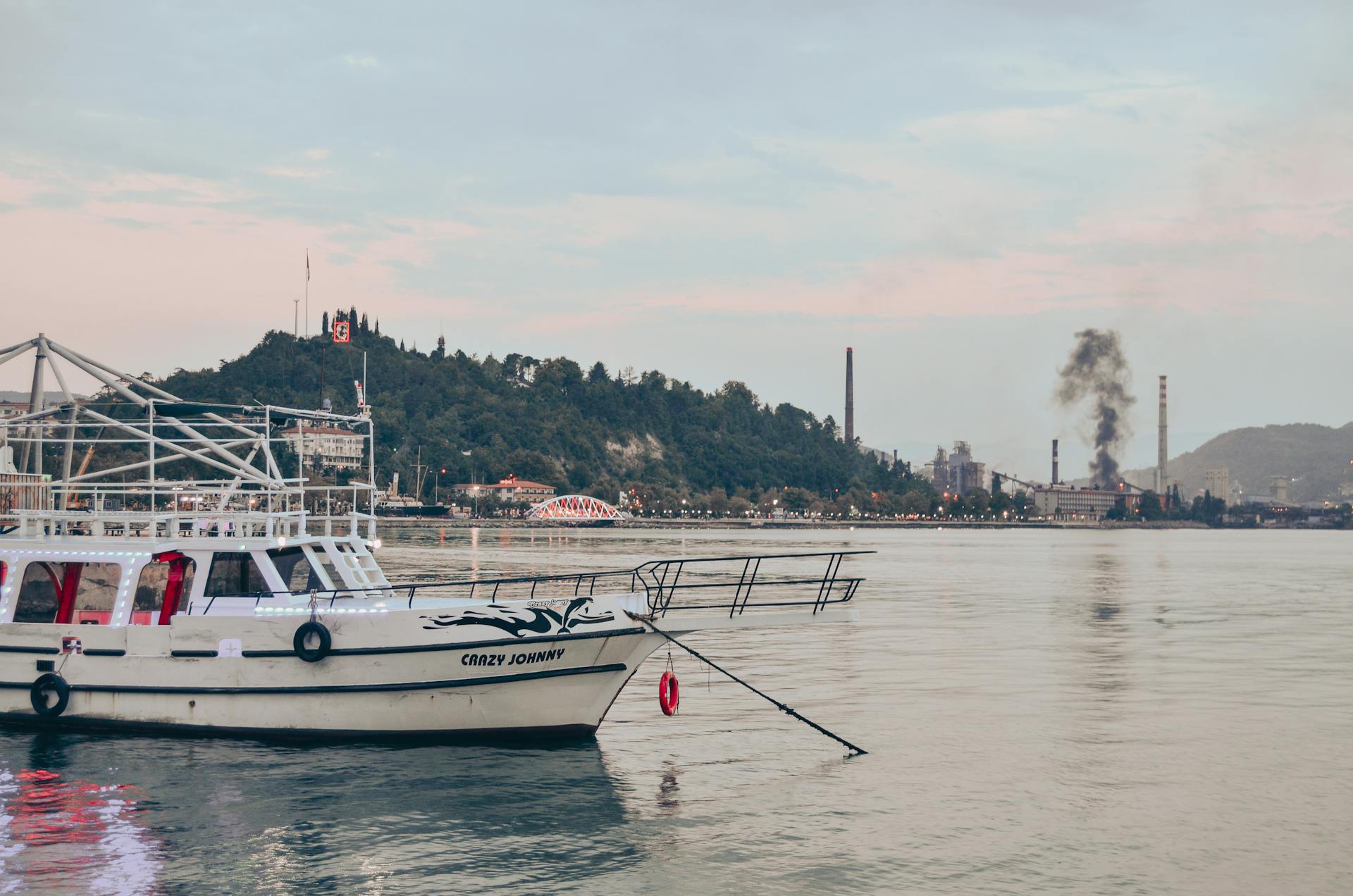
The RMS Olympic was the largest ship in the world at the time of its launch in 1910, measuring over 900 feet in length. It was the sister ship of the Titanic and the Britannic.
The Olympic was involved in a collision with a warship in 1914, which resulted in significant damage to its hull. The ship was forced to return to port for repairs.
The Olympic's collision was a major maritime incident, but it was fortunate that there were no fatalities. The ship's crew and passengers were evacuated safely.
The Olympic's damage was extensive, but it was eventually repaired and returned to service. It went on to have a long and storied career, serving as a troop ship during World War I.
The Hawke: Collision in the Solent
The Hawke was a protected cruiser of the Royal Navy.
It was making a turn to starboard around Egypt Point on the Isle of Wight on September 20, 1911.
The collision occurred as the Olympic was turning to port around the West Bramble buoy in the Solent.
Olympic was accelerating rapidly towards her full ahead speed for restricted waters.
Hawke unexpectedly veered sharply to port and struck the Olympic in her starboard quarter.
This unexpected move caught the Olympic off guard, leading to the collision.
The Olympic suffered two large holes in her hull, above and below the waterline, and a twisted propeller shaft.
Hawke's bow was severely damaged, and the ship nearly capsized.
No one was killed or seriously injured in the collision.
The Olympic was able to return to Southampton under her own power.
The crew members Violet Jessop and Arthur John Priest survived the collision and went on to survive the sinking of the Titanic and the Britannic.
They were among the few people to have survived all three shipwrecks.
Causes of the Collision
The collision between RMS Olympic and HMS Hawke was a result of a surprise turn by Hawke, which was unable to take sufficient avoiding action as Olympic turned to starboard.
The wide radius of Olympic's turn caught Hawke off guard, leading to the collision. The commander of Hawke, William Frederick Blunt, was unable to react in time.
Olympic's hull was damaged in two large holes, above and below the waterline, causing the flooding of two of her watertight compartments. This resulted in a twisted propeller shaft.
Hawke suffered severe damage to her bow, which nearly caused her to capsize. Despite the damage, Olympic was able to return to Southampton under her own power.
Captain Edward Smith was in command of Olympic at the time of the incident, and would later die as captain of RMS Titanic.
Sources
- https://www.nelights.com/blog/the-nantucket-lightship-collision-with-the-rms-olympic/
- https://oceanlinersmagazine.com/2020/09/20/olympic-1911-collides-hms-hawke/
- https://en.wikipedia.org/wiki/Olympic%E2%80%93Hawke_collision
- https://www.scientificamerican.com/article/the-andldquohawkeandrdquo-andldquoo/
- https://markchirnside.co.uk/the-sting-of-the-hawke-collision-in-the-solent/
Featured Images: pexels.com


